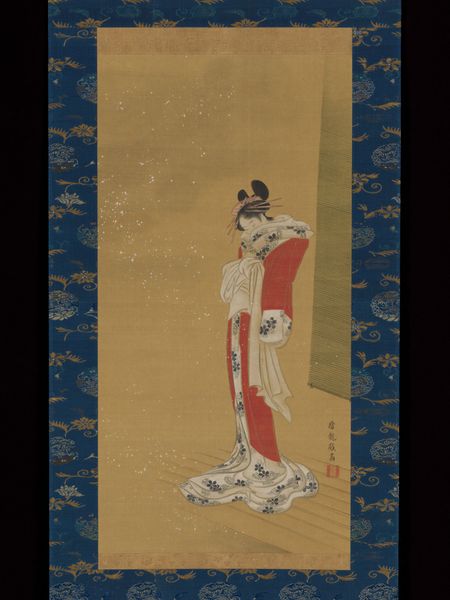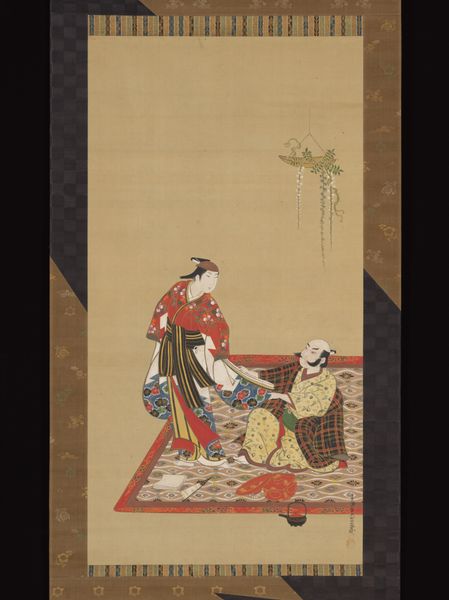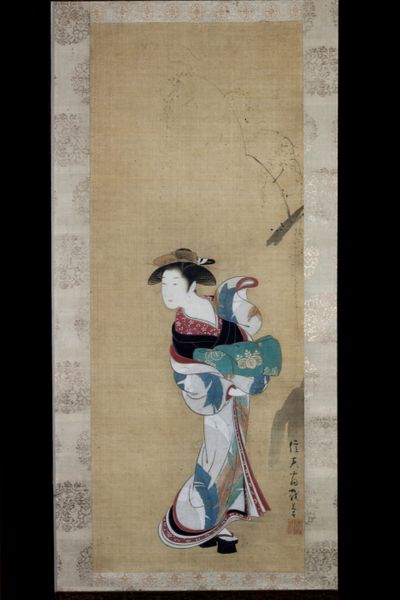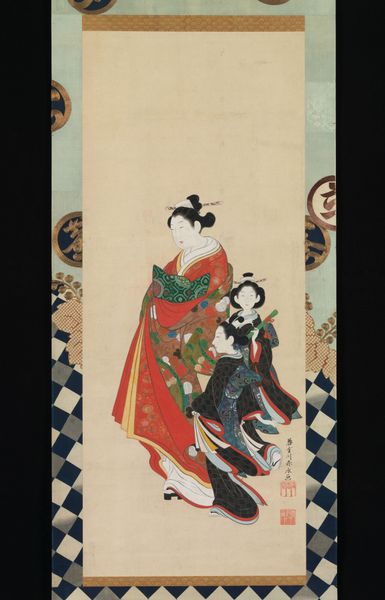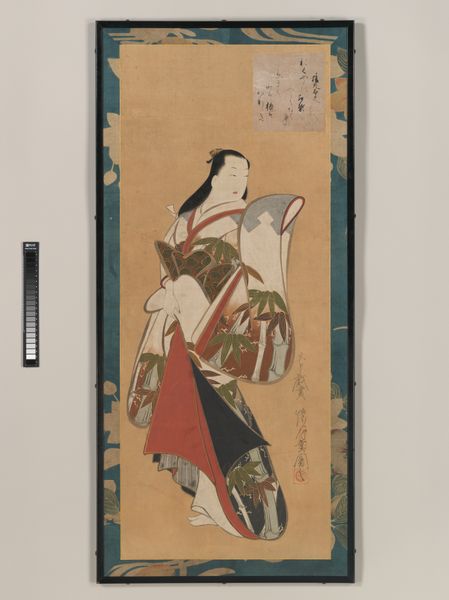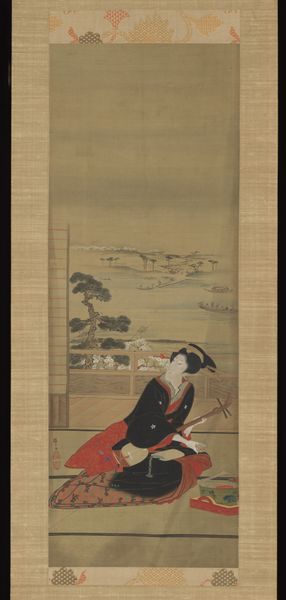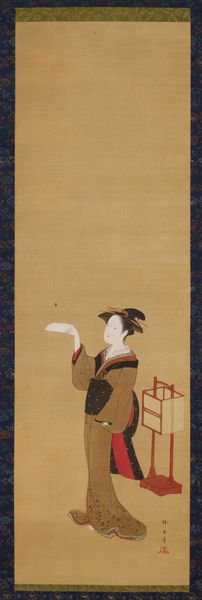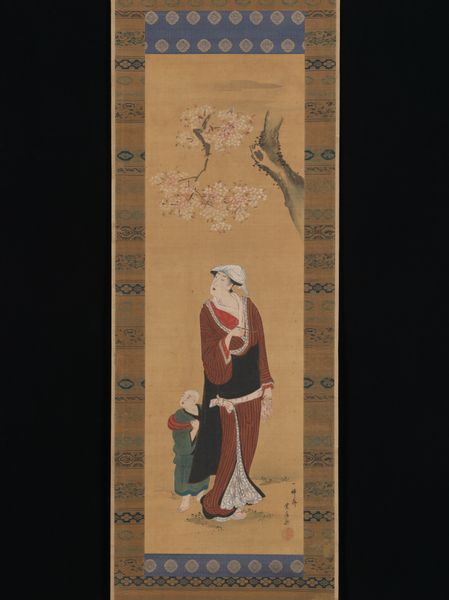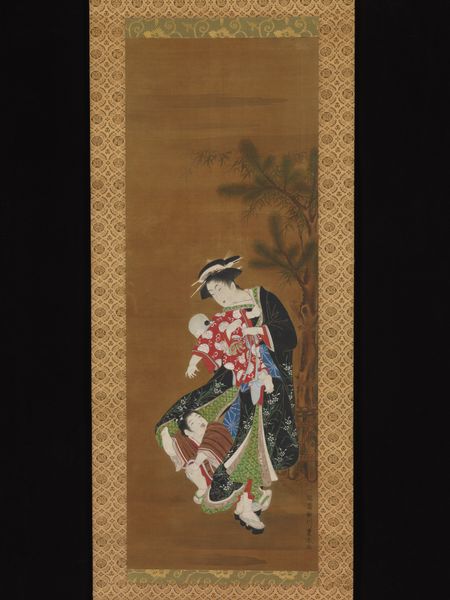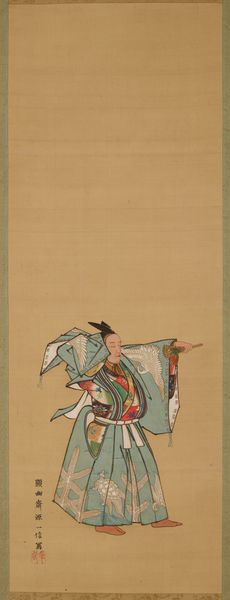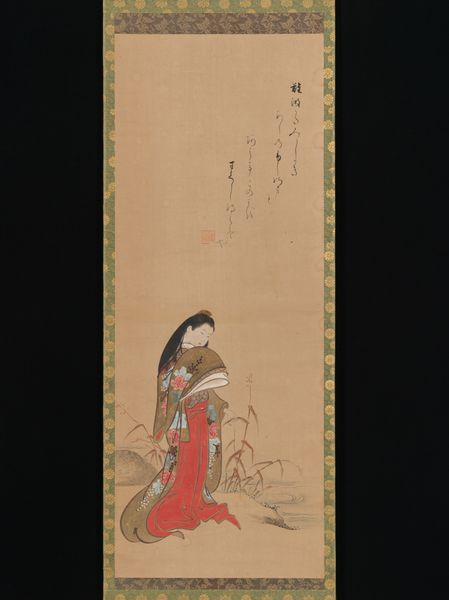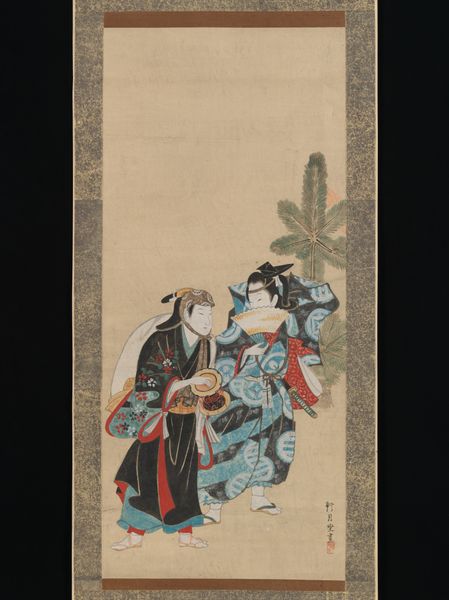
Beauty of the Yoshiwara with Apprentice in Moonlight 19th century
0:00
0:00
painting, watercolor
#
portrait
#
water colours
#
painting
#
asian-art
#
ukiyo-e
#
japan
#
handmade artwork painting
#
watercolor
#
japanese
#
watercolor
Dimensions: Image: 37 1/4 × 12 3/8 in. (94.6 × 31.4 cm) Overall with mounting: 69 1/2 × 16 7/8 in. (176.5 × 42.9 cm) Overall with knobs: 69 1/2 × 19 in. (176.5 × 48.3 cm)
Copyright: Public Domain
Curator: Before us, we have "Beauty of the Yoshiwara with Apprentice in Moonlight," a 19th-century watercolor painting by Teisai Hokuba. It’s part of the Metropolitan Museum of Art’s collection, presented in the format of a traditional Japanese scroll. Editor: There’s such stillness to this image, an almost haunting serenity. The vast emptiness above the figures evokes a powerful sense of isolation, accentuated by the subtle coloring and the long verticality of the composition. Curator: The artist masterfully utilizes the empty space to emphasize the moon and figures, employing a muted palette with carefully chosen placements of color. Look closely at the application of watercolor, notice how controlled it is, allowing light to permeate the imagery to enhance depth and compositional balance. Editor: It's interesting how the moonlight itself almost becomes a character. Throughout Japanese art, the moon has often symbolized purity, reflection, and a sense of longing, which definitely resonates here. The Yoshiwara district itself was known for pleasure but often associated with melancholy as the women's lives were far from simple. Curator: Note, too, the geometric construction. Hokuba sets a powerful stage, if you will. The soft washes of color on her garment contrast with the geometric arrangement of planes. The whole artwork reads with a controlled formal cadence that creates visual order. Editor: And there is symbolic order here, the apprentice positioned behind the courtesan—this is more than a literal portrait. The obscured face of the apprentice speaks volumes about the hidden realities behind the glamorous facade of the Yoshiwara district. It is about innocence juxtaposed with experience and a whole host of unspoken social commentaries. Curator: A poignant analysis. The delicate dance of color and form serves not merely aesthetic pleasure, but layers to what otherwise could have been a simple portrait. Editor: Indeed, this viewing offers much to contemplate about Japanese aesthetics and about life itself. Thank you for illuminating these design choices in Hokuba’s scroll and prompting a greater appreciation of both Japanese art and cultural artifacts!
Comments
No comments
Be the first to comment and join the conversation on the ultimate creative platform.
